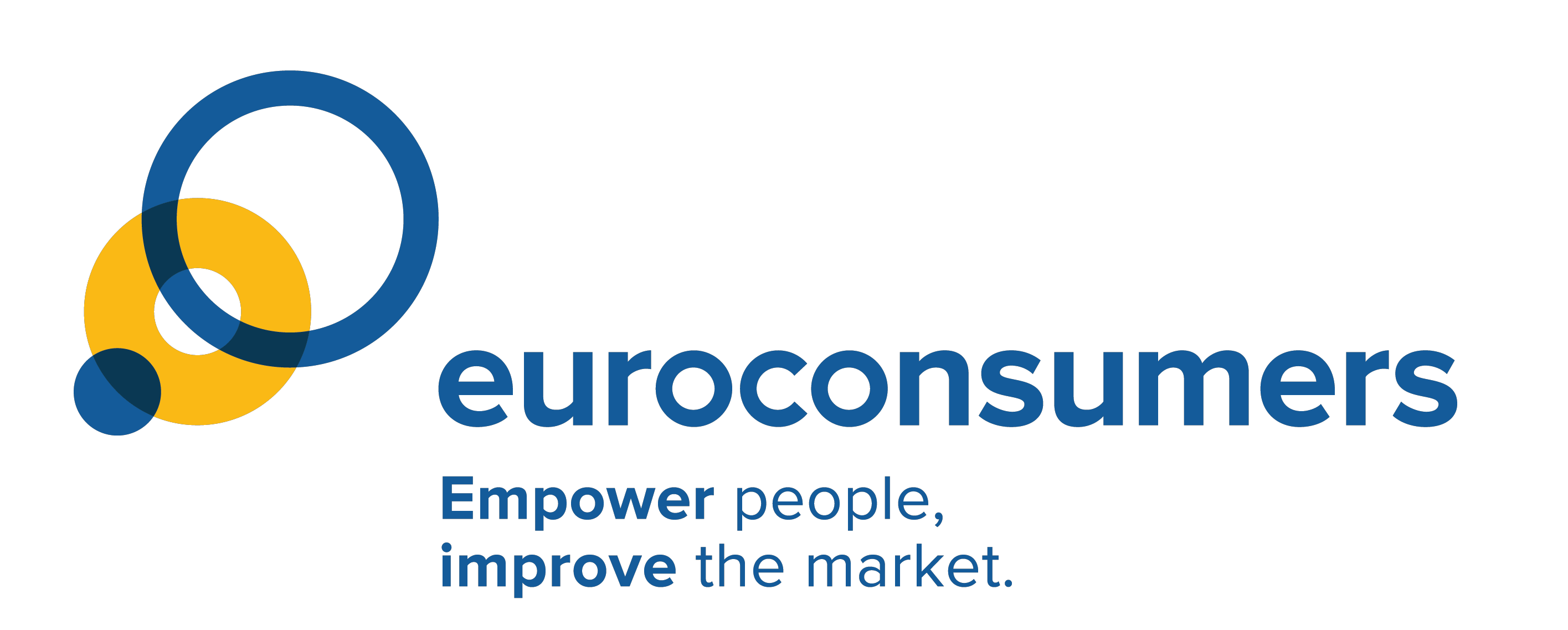This website uses cookies so that we can provide you with the best user experience possible. Cookie information is stored in your browser and performs functions such as recognising you when you return to our website and helping our team to understand which sections of the website you find most interesting and useful.
Dangerous levels of toxins found in balloons sold online – what can digital marketplaces do?

Altroconsumo safety tests find harmful chemicals in balloons sold on and offline. With so many items available for purchase online, this highlights once again the challenge of monitoring product safety on marketplace platforms.
Balloons are a simple and low-cost way to decorate, play and celebrate with friends and family. Amidst all the fun, consumers probably don’t give much thought to how or what balloons are made of and the risks they can pose. However, because of their appeal to children, they are subject to strict safety rules.
New research from Euroconsumers’ Italian member Altroconsumo set out to discover how safe balloons on the market were – particularly given the high volume now available via online marketplaces. Are manufacturers sticking to the rules and are on and offline retailers checking the products on sale were safe? First we take a look at the rules that balloon manufacturers and retailers should be following.
Safety rules for balloons
There are rules in the EU that set safe levels for the chemical compounds that balloons contain. The International Agency for Research on Cancer (IARC) classifies nitrosamines and nitrosatables as probable carcinogens which can increase the risk of gastric and esophageal cancers, if ingested beyond the safe threshold. Nitrosamines are formed in the manufacture of balloons when the rubber is processed to make it more resistant. These chemicals can be released when a balloon is inflated by mouth. These potential carcinogens are also found in products like beer, cured meats and canned fish. To keep consumers safe, there are legal limits both for the presence of nitrosamines in toys, and for the use of nitrites and nitrates as preservatives in food and drink.
In some countries, toy safety rules also require warnings labels to help prevent children from choking or suffocating from inhaling or swallowing uninflated or broken balloons, and advice that pumps are used to avoid contact with the mouth. Finally, products on the market in the EU should have labels in the language of the country of sale, as well as the widely recognized ‘CE’ marking showing compliance with single European market product safety standards.
How safe are the balloons on sale today?
Altroconsumo purchased 12 packs of balloons, 10 on e-commerce marketplace platforms (including Amazon and Wish) and 2 on the high street. After analysis in the testing lab, they found that:
- 7 out of 12 packets of balloons contain potentially carcinogenic chemical compounds in concentrations above the safety limit provided for by the toy legislation.
- Mandatory safety warnings about the dangers for young children were missing from two of the packets and information was not always available in the national language.
- Five of the 12 balloon packs did not have safety warnings to inflate by pump and not by mouth, even though such warnings are mandatory in some countries.
Altroconsumo reported its findings to the Ministry of Economic Development, and to the online shopping platforms where most of the balloon packages were purchased. This resulted in prompt action from Amazon to remove the products in question.
Enforcing product safety in online marketplaces
Unfortunately, finding unsafe products on general sale is not unusual and while consumer organizations will continue with their investigations, this will never be enough to contain the problem. Stronger enforcement of regulations is clearly required.
However, the digitalization of retail has left many regulations lagging behind. The much wider availability of e-commerce has revolutionized choice and convenience for consumers, but the sheer volume of traders and products also poses challenges.
While regulation and enforcement may be complex, the consumer view is very simple, they want and expect their products to be safe whether they buy them online or in a physical shop. But many are unaware of the fact that buying from a trader via an online marketplace does not mean that the appropriate checks have been done. A recent study from the UK consumer group Which? found that 79 per cent of UK consumers were unaware that online marketplaces were not responsible for monitoring things like product safety.
Euroconsumers’ organizations in Belgium, Spain, Italy and Portugal have a long history of testing the safety of products. In 2017, they joined with organizations in the Netherlands, Germany and Denmark to test 250 products available online. The products spanned 18 categories and were selected based on their level of potential risk to consumers. They included electrical devices like USB chargers and adapters, children’s toys and children’s clothing and even vital safety equipment like smoke alarms. Two out of three of the tested products turned out to be unsafe. Against this backdrop, what can platforms and regulators do?
Online marketplaces must step up to challenge of product safety
Amazon immediately took down the unsafe products once they had been informed of them, showing that platforms can and will take responsibility if they want to. This suggests an opportunity to join forces to step up product safety and ensure a quick follow-up of safety test results. No-one assumes that monitoring and taking down of the millions of unscrupulous traders or unsafe products will be simple but if product safety is not properly ensured, it will lose consumers’ trust which is not in anyone’s interest.
To build consumer trust Euroconsumers would like to see a more proactive approach. Online marketplaces should apply the speed and efficiency consumers appreciate so much to removing unsafe products to minimize harm to consumers. We’d also like to see a more holistic response, where platforms inform consumers of safety issues, ensure effective recalls and prevent unsafe products from being listed again. This will improve the visibility of the efforts being made to keep platforms safe.
Online marketplaces are no longer neutral ‘pipes’ through which transactions flow, they are an integral part of the supply and value chain generated by e-commerce. This comes with enhanced responsibilities not just for product safety but for ensuring prices are fair, and not subject to price-gouging in times of crisis, and that consumers are treated fairly and in line with the law at all times.
Digital Services Act: a new dawn for intermediaries?
The EU Digital Services Act goes some way to ensuring that platforms like online marketplaces take responsibility for consumers. EU lawmakers pushed for stricter information and monitoring requirements for online marketplaces. In particular, traders will only be able to access their services after providing some basic information, and the platforms should do their best to verify them. The marketplaces will also have to randomly check products’ legality against official databases. Consumers will have the right to seek compensation for damages caused by a non-complying platform, for instance, because it did not make the best efforts to verify the trader’s identity.
Online platforms with more than 45 million monthly active users are defined as ‘very large’ and have additional obligations around the traceability of traders, transparency requirements, a system for handling complaints, and out-of-court dispute settlement.
It is nevertheless regrettable that the Act didn’t go the full mile and missed the opportunity to establish liability obligations of online marketplaces. The Digital Services Act is expected to be finally approved by the European Council and European Parliament in July 2022. Euroconsumers will push for an ambitious and consumer-proof implementation. Together with BEUC, Euroconsumers is also focusing on the upcoming General Product Safety Regulation to further secure product safety for all consumers.
Online marketplaces should provide confidence and convenience
The simple example of unsafe balloons on sale highlights the risks faced by consumers when they shop for everyday items. Of course, unsafe items are also found in physical stores, but with consumer spending shifting online, and mostly towards large platform marketplaces, there is a need for a holistic response and quick remedial action.
Producers, sellers, platforms, market places, legislators, enforcement authorities, and consumer organizations all have a role to play as we adapt to the reality of online commerce. This will put us in a good position as it continues to innovate and adapt via social commerce.
Online marketplaces have a great opportunity to become enablers for a strong and sustainable e-commerce system that provides confidence as well as convenience. Online marketplaces can work with consumer organizations and use their track record in product testing and consumer complaints to understand the scale and impact of the problems. At the same time, consumer organizations will continue to advocate for stronger rules and adequate enforcement to make sure products and platforms are safe for all.


